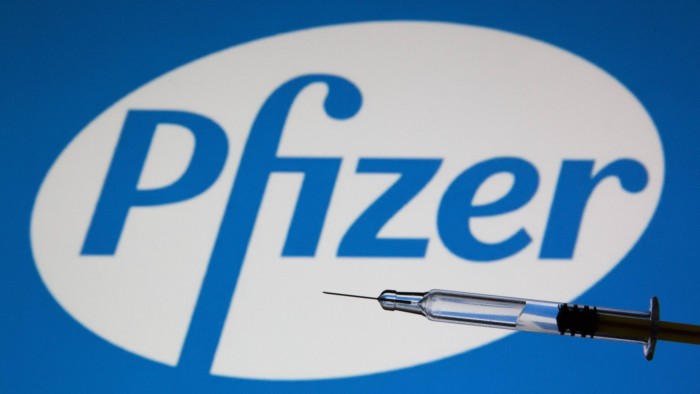Unlock the White House Watch newsletter for free
Your guide to what Trump’s second term means for Washington, business and the world
The market breathed a sigh of relief last week when Pfizer struck a deal with President Donald Trump. Investors took it as hopeful sign that the pharmaceutical industry as a whole could escape the threat of major US price cuts and tariffs on imported medicines.
Political worries have hung over the sector for most of the year and share prices have underperformed. But Tim Opler, a healthcare specialist at investment bank Stifel, said the top-30 life sciences companies gained $440bn in value last week, as “it became apparent that Trump’s tariff and [pricing] policies were unlikely to impact pharma nearly as badly as feared”.
What has Trump said on drug prices and tariffs?
Since May, the president has been threatening pharma companies with import tariffs if they do not agree to lower prices. He has repeatedly complained people could access the wildly popular new anti-obesity drugs in London at a fraction of the cost of the US, where branded medicines are on average two to three times more expensive than they are in Europe.
But without legislation to regulate drug pricing, the threats are difficult to enact. And during Trump’s first term, the pharmaceutical industry defeated his proposed price controls in court. Still, he has continued to apply pressure, threatening import tariffs of up to 200 per cent over the summer. Then last month, he said the tariffs would be 100 per cent, but only on branded drugs, and imports from the EU would be tariffed at 15 per cent in line with a trade deal agreed in July.
He also in July demanded 17 pharmaceutical companies make binding commitments to lower drug prices by September 29. The deadline and tariff threat combined left drugmakers with an apparently clear choice: make a deal or prepare for a drawn-out fight. Pfizer chief executive Albert Bourla went for a deal, agreeing to offer some drugs at lower prices and to sell medicines directly to patients. It ultimately won him a public celebration in the White House and a strong rally for the company’s shares.
How else have drug companies responded?
Almost all the major pharma companies have made serious commitments to invest in US research and development and manufacturing, including a $70bn promise from Pfizer, $50bn each from Roche and AstraZeneca and $27bn from Eli Lilly.
Trump recently said pharma groups making manufacturing investments would be exempt from tariffs.
Some companies have raised prices on medicines they sell in Europe to try to please the president, who has consistently complained that high US prices subsidise innovation elsewhere. Eli Lilly increased the price of its weight-loss drug Mounjaro for private patients in the UK by up to 170 per cent, while Bristol Myers Squibb said it would sell its new schizophrenia drug Cobenfy for the same price in the UK as the US. At the same time, the UK government has proposed an up to 25 per cent increase in how much it is prepared to pay for drugs for the NHS.
In the US, the industry has launched more direct-to-consumer services, offering drugs at cheaper prices. This also draws attention to the role of pharmacy benefit managers — intermediaries between drug companies and patients — in driving up US prices.
Why did investors respond well to Pfizer’s deal?
On the surface, it did not look good: the company voluntarily agreed to lower certain drug prices — seemingly at odds with its mandate to maximise profits for shareholders.
But there are crucial quid pro quos: not all medicines are included, Pfizer will not face import tariffs for three years and the “most favoured nation” price controls the company agreed will apply only to drugs supplied via Medicaid, the government-backed insurance for people on low incomes.
Under the MFN policy, prices are in line with the lowest levels offered in comparable countries.
Wall Street analysts calculate the Medicaid discounts will apply to only 5 per cent of Pfizer’s US revenues and have said the deal will not be material to the company. In some cases, Pfizer’s Medicaid prices are already below the levels charged in other countries.
“Pfizer is not making such a concession and, in turn, gets the tariff monkey off its back,” Opler at Stifel said.
Christian Koch, head of Bellevue Asset Management’s biotech investing arm, believes pharmaceutical companies are likely to raise their prices outside the US to reduce the gap.
“Global pharma margin expansion is becoming our base case for Europe, Japan, and other OECD countries,” he said, adding Pfizer’s deal in effect “signals an export of US-style free pricing to the developed world”.
How easy will it be for rivals to reach similar deals?
Medicaid is a very small portion of Pfizer’s revenues but was crucial to the agreement. Competitors such as Merck and Eli Lilly also earn a small portion of their revenues via the insurance programme, according to Wall Street analysts.
But it is not the case for everyone. Gilead Sciences — one of the 17 companies Trump targeted for lowering prices — generates about 70 per cent of its revenues from HIV treatments. Medicaid is the largest provider of health cover for people with HIV. About 40 per cent of adults with HIV are in Medicaid, compared with 15 per cent of all adults, according to KFF, a non-profit health policy research group.
Trump’s threats have not hit Gilead’s shares, which are up 26 per cent this year. Still, investors will be watching the White House for clues about how the company and the rest of the sector will be affected by any new pronouncements or decisions.
